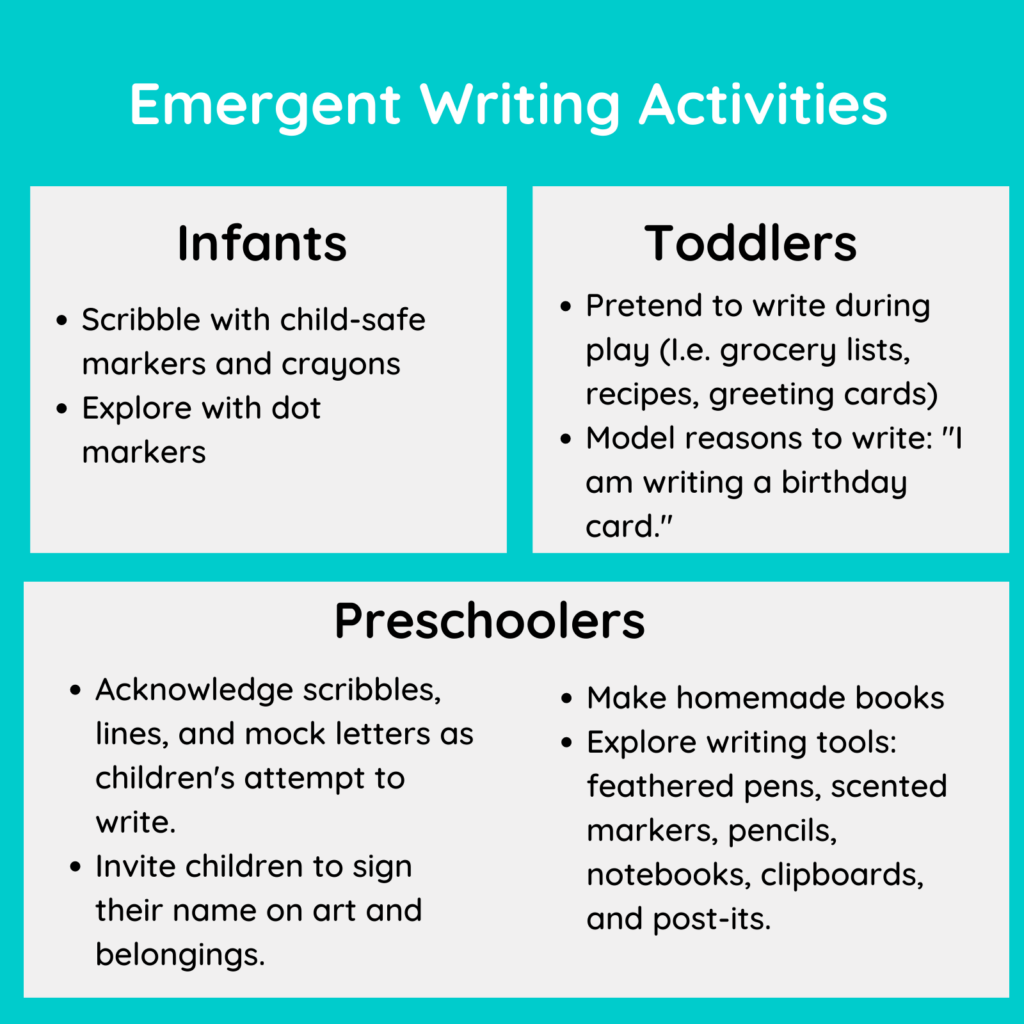
Emergent writing is an ever-evolving process in the play of a young child: marks that start as scribbles turn into smaller forms, straighter lines, mock letters, and finally, conventional writing. Through these developmental stages, children develop an ability to copy the lines, curves and angles of the alphabet.
Children can understand at an early age that writing helps us to convey ideas and tell stories. One of the most common things that children first learn to write is their own name. A child who can write her name can be proud to sign her signature as she labels her art, belongings, and participates in school routines.
Caregivers can create environments where children are encouraged to engage in pretend writing. Scribbling is the first step! From about 9 to 12 months of age, children may start to scribble and continue to scribble through their preschool years. With exposure and practice, their scribbles will slowly turn into letter-like forms. As children grow older and engage in more dramatic play, caregivers can explicitly demonstrate the uses of writing for children. For example, while playing “doctor”, the caregiver may say “Oh, I’m going to write a prescription!” and invite children to write (albeit scribble!) their own list. Caregivers can build this skill through play by inviting children to pretend to write recipes, letters to loved ones, and homemade books. Caregivers can provide children with notebooks, clipboards, and post-its to encourage emergent writing.

For more activities that help build a child’s emergent writing skills, visit rayzkidz.com/category/activities